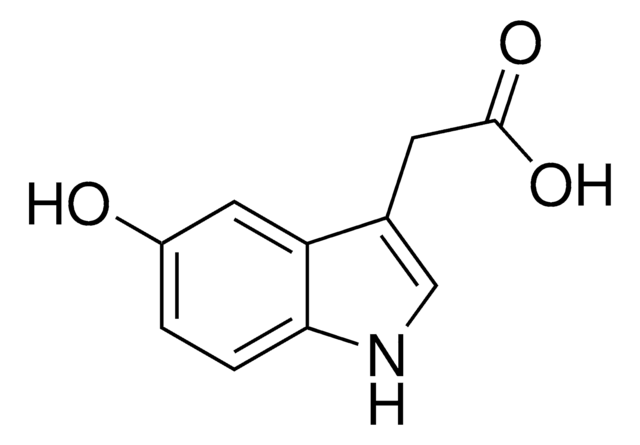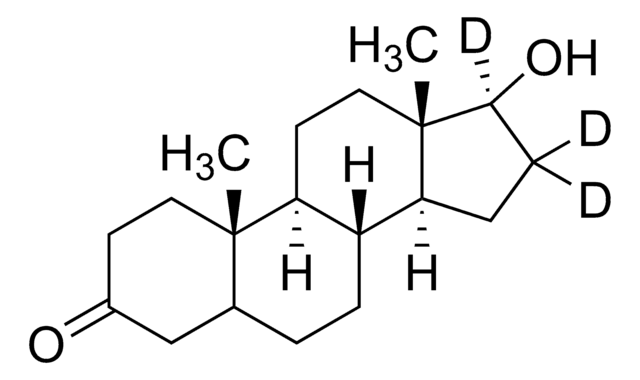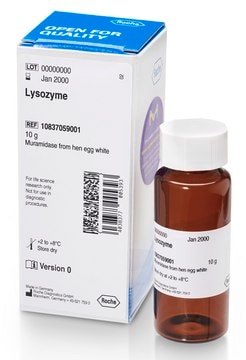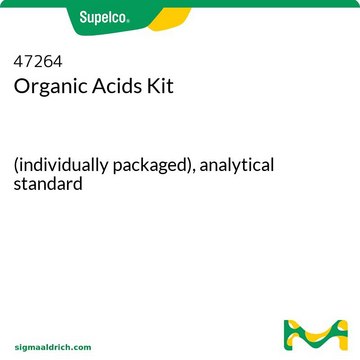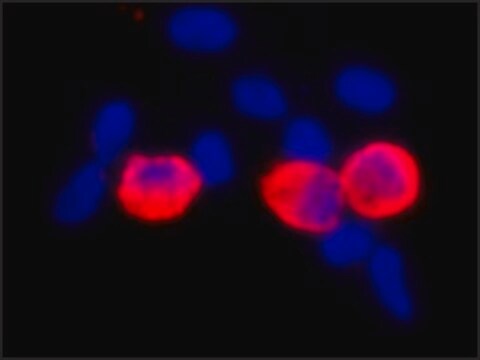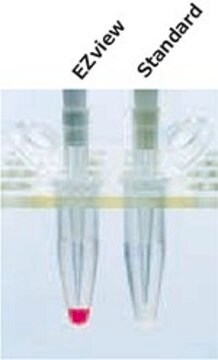M2435
c-Myc Peptide
≥97%, lyophilized powder
Sinonimo/i:
c-Myc tag
Autenticatiper visualizzare i prezzi riservati alla tua organizzazione & contrattuali
About This Item
Prodotti consigliati
Nome del prodotto
c-Myc Peptide, lyophilized powder
Origine biologica
synthetic
Livello qualitativo
Saggio
≥97%
Stato
lyophilized powder
PM
1203.3 Da
Concentrazione
5-10 μg/mL (Suggested working concentration to compete out the binding of c-Myc)
tecniche
protein extraction: suitable
Temperatura di conservazione
−20°C
Categorie correlate
Amino Acid Sequence
Glu-Gln-Lys-Leu-Ile-Ser-Glu-Glu-Asp-Leu
Descrizione generale
The c-Myc Peptide is a synthetic peptide with an amino acid sequence that corresponds to the amino acids 410-419 of the C-terminal of human c-myc.
Applicazioni
Useful for displacement of c-Myc-tagged fusion proteins bound to anti-c-Myc antibodies in immunoassays. The successful inhibition of antibody binding by c-Myc peptide demonstrates binding is specific.
Altre note
Amino acid sequence is corresponds to amino acids 410-419 of the C-terminal of human c-Myc.
Lyophilized from 0.1% TFA in H2O
Nota sulla preparazione
Dissolve in water to a final concentration of 5 mg/mL.
Codice della classe di stoccaggio
11 - Combustible Solids
Classe di pericolosità dell'acqua (WGK)
WGK 3
Punto d’infiammabilità (°F)
Not applicable
Punto d’infiammabilità (°C)
Not applicable
Dispositivi di protezione individuale
Eyeshields, Gloves, type N95 (US)
Scegli una delle versioni più recenti:
Possiedi già questo prodotto?
I documenti relativi ai prodotti acquistati recentemente sono disponibili nell’Archivio dei documenti.
I clienti hanno visto anche
Yanxiao Zhang et al.
Oncotarget, 8(4), 5761-5773 (2016-12-23)
PAX8-PPARG fusion protein (PPFP) results from a t(2;3)(q13;p25) chromosomal translocation, is found in 30% of follicular thyroid carcinomas, and demonstrates oncogenic capacity in transgenic mice. A PPARG ligand, pioglitazone, is highly therapeutic in mice with PPFP thyroid cancer. However, only
Atanas G Atanasov et al.
Biochimica et biophysica acta, 1783(8), 1536-1543 (2008-04-03)
Hexose-6-phosphate dehydrogenase (H6PDH) has been shown to stimulate 11beta-hydroxysteroid dehydrogenase type 1 (11beta-HSD1)-dependent local regeneration of active glucocorticoids. Here, we show that coexpression with H6PDH results in a dramatic shift from 11beta-HSD1 oxidase to reductase activity without affecting the activity
Daria D Korotkova et al.
Cell reports, 29(4), 1027-1040 (2019-10-24)
The molecular basis of higher regenerative capacity of cold-blooded animals comparing to warm-blooded ones is poorly understood. Although this difference in regenerative capacities is commonly thought to be a result of restructuring of the same regulatory gene network, we hypothesized
Lian-Mei Tan et al.
The EMBO journal, 37(19) (2018-08-15)
In eukaryotes, heterochromatin regions are typically subjected to transcriptional silencing. DNA methylation has an important role in such silencing and has been studied extensively. However, little is known about how methylated heterochromatin regions are subjected to silencing. We conducted a
Advait Subramanian et al.
Cell, 176(6), 1461-1476 (2019-03-09)
Maintaining the optimal performance of cell processes and organelles is the task of auto-regulatory systems. Here we describe an auto-regulatory device that helps to maintain homeostasis of the endoplasmic reticulum (ER) by adjusting the secretory flux to the cargo load.
Il team dei nostri ricercatori vanta grande esperienza in tutte le aree della ricerca quali Life Science, scienza dei materiali, sintesi chimica, cromatografia, discipline analitiche, ecc..
Contatta l'Assistenza Tecnica.




